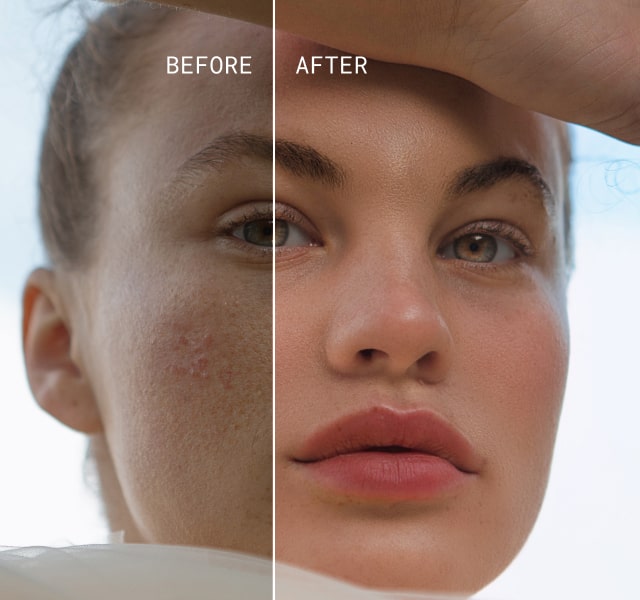Moody Autumn Portraits: Playing With Shadows And Contrast + Examples
September 19, 2025
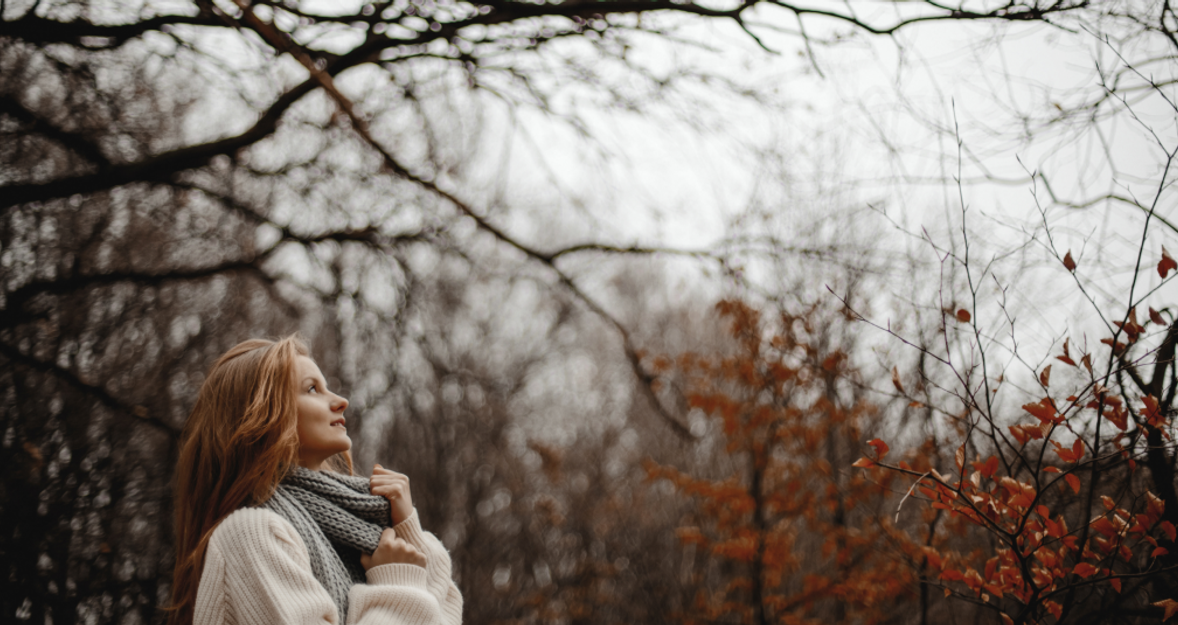
With mornings getting cooler and the seasons changing, those of us who love moodier shots are gearing up. We’re hoping for morning mist, rain-soaked trees, fallen leaves, and outfits and poses to match.
I’ve always leaned towards the moodier side. It started with grimy cyberpunk city shots, and since then I’ve explored other styles to create melancholic work, including moody street portraits.
In this article, I’ll share a few ideasI have for the upcoming season, focusing on shadows and contrast in cinematic and dramatic autumn portraits. I’ll also go through how to edit outdoor portraits, because a great deal can be achieved there too. So let’s get started!
Why Moody Works in Autumn
When we think of autumn, we tend to picture cosy shots. I’ve done a few shoots where the whole vibe centred around warm colours and my model interacting with leaves and nature. Her outfit was perfect for the season with earthy tones and of course we shot on a sunny day.
But not every day is full of sunshine and brightly coloured leaves. With the new season we start to get cooler mornings, which can mean mist. The days get shorter, and with the sun lower in the sky, we can enjoy longer and more dramatic shadows with softer lighting. This works as a bonus for flattering skin tones. That lower sun lets us experiment with moody side lighting and backlighting throughout the day, giving us cinematic results. In summer, with the sun overhead, shadows are shorter and the light is harsher. I see a big improvement in my autumn shots compared to my summer work, thanks to the quality of shadows and the stronger contrast the light brings.
Autumn also gives us far more colour to play with. While they lean warm initially, those tones can work beautifully in moody edits or act as contrast against your subject’s outfit, creating more cinematic colour schemes.
It really is a fantastic time of year for all photographers. Summer feels like it drags on forever here in South Korea, so autumn brings about a refreshing change.
Learn more: Color Grading: How to Make Colors Deeper, Not Weird
Less Time Editing, More Time Creating
Try Aperty NowIdeas for Moody Autumn Portraits
Because autumn weather shifts so quickly, the light can transform your portraits in unexpected ways. To make the most of it, I’ve divided these ideas by weather and lighting, so you’ll always have the right approach for the conditions.
1. Rainy Autumn Portraits
I’ve often used umbrellas in my work, as they instantly add a cinematic touch to the photo and they work amazingly well in autumn portraits too. The dark silhouette of the umbrella against a backdrop of warm leaves allows for clear separation from the background. You can then use the dark backdrop of the umbrella to draw better focus to your model. One particularly effective shot I have in mind is of the model walking away with the umbrella angled and glancing over their shoulder.
The rain also gives us more texture and deeper colours, so I will place my model close to and among branches. The wood of the trees will be much darker, and the leaves will have rich, deeply saturated colours, so we will want to make the most of them. Darker outfits complement these tones effectively, something like a long black coat. We also get the added texture of raindrops lingering on the branches, which adds even more atmosphere.
So if you see a rainy forecast, make the most of it, as those shots are going to look fantastic!
2. Misty Mornings
 To be clear, the kind of misty conditions I am referring to are when the sun is rising, giving us warm light coupled with mist, not dense fog and cloudy skies.
To be clear, the kind of misty conditions I am referring to are when the sun is rising, giving us warm light coupled with mist, not dense fog and cloudy skies.
I particularly want that sunrise light, as I think backlit shots are going to look amazing while still providing a moody cinematic feel. The contrast in the shots can come from silhouetting your model against the sky using lower shooting angles. If we are working with silhouettes, we want to make sure they look good. To achieve this, I would use an outfit with long flowing fabrics such as coats and scarves, with a model who has long hair.
As for poses, I would like the model to be more dynamic, moving quickly in front of the camera, with outfit and hair flowing behind them. I’d then experiment with actions such as running away from the camera, spinning towards it, and flicking their hair.
I’d also experiment with side lighting at this time of day, with both static and dynamic posing. The quality of light will be extremely soft and very flattering for your model, so you’ll want to make the most of it. The contrast and shadow from side lighting will give a cinematic and moody quality, which should turn out great and result in portfolio-worthy work.
3. Mid-afternoon
Here we will have a lot more light to work with. I’ll start with sunny conditions. In these situations, I definitely want to use backlighting, as we will also get enough light to clearly see the face. I’d use the sunlight to illuminate the top of the hair and help frame the face, giving beautiful contrast that extends to the background and subject. Side lighting is also effective at this time of day, and we can experiment with quicker and more dynamic movements thanks to faster shutter speeds.
 As for cloudy conditions, we may not be able to achieve the same shadow work, but these conditions should not be overlooked. Cloud cover provides deeper, more saturated colours, along with softer light that flatters your model. You can create colour contrast by having the model wear cooler tones against the autumn leaves, or by choosing dark clothing.
As for cloudy conditions, we may not be able to achieve the same shadow work, but these conditions should not be overlooked. Cloud cover provides deeper, more saturated colours, along with softer light that flatters your model. You can create colour contrast by having the model wear cooler tones against the autumn leaves, or by choosing dark clothing.
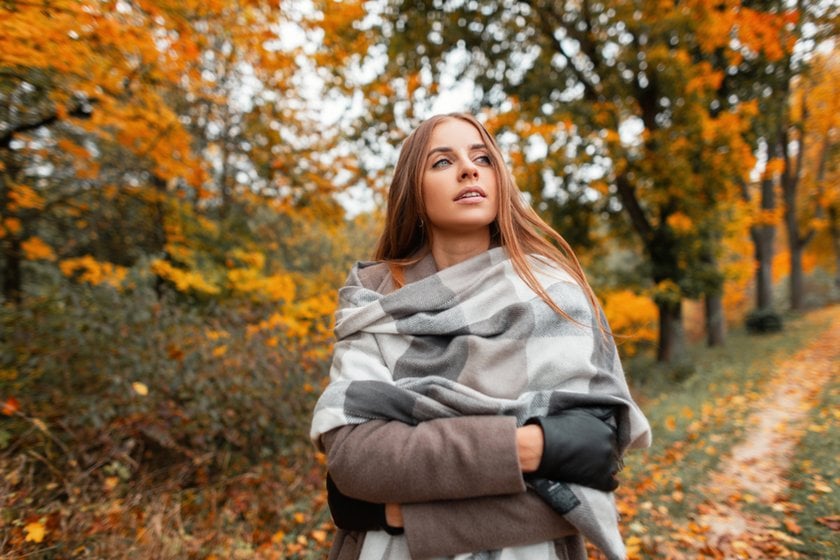 4. Golden Hour
4. Golden Hour
Finally, we have golden hour, and while it may bring connotations of the warm and cheerful light we all know and love, we can still work with shadows and contrast to create moody shots.
Again, I’d opt for side or backlighting, as obscuring part or all of the face in shadow will instantly create a more melancholic and cinematic mood. I’d also break the light up by blocking direct sunlight with trees, branches, or leaves. We can create contrast through golden light breaking through but with darker backdrops, so finding shadowy areas or using more of the tree trunk in the background, rather than lots of golden leaves, works effectively.
The outfits and poses should also convey a more moody tone. Darker fabrics work much better, and you can have your model pose with a more dramatic look, such as staring directly at the camera with a serious expression or casting their eyes down towards the ground.
The way you edit your photos will directly contribute to creating a moody golden hour shot, and that’s exactly what we will look at next.
AI Editing at the Speed of Inspiration
Try Aperty NowEditing Autumn Photos for Mood
For portrait photo editing, I use Aperty. It’s portrait retouch software that uses AI to speed up workflow and give professional results. We can also easily create moody edits with Aperty, so let’s take a look at how to do that now.
Step 1: Create a Strong Base Edit
Aperty still has all the essential tools you need to edit images, and I first start by getting my photo into a good state. For a moody photo, I deepen the contrast and shadows and bring up the highlights slightly until there is a good balance of the image looking moody but not too dark.
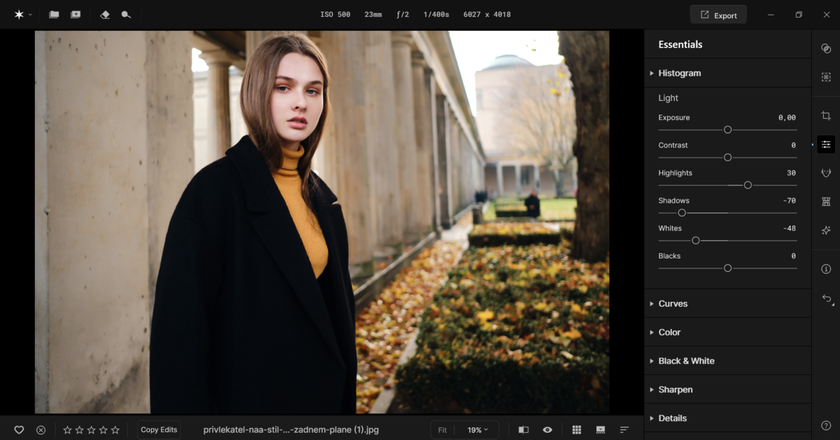 Step 2: Retouch the Model
Step 2: Retouch the Model
I then move on to working on my model’s skin, clearing up any blemishes and smoothing it out. We are working in softer light with autumn, so there may not be too much to do, but it still takes no time at all thanks to Aperty’s AI technology. Just one click and I can clean blemishes and smooth the skin.
I will then brighten the face a bit to help it stand out, as this draws the eye instantly to the most important feature of a portrait photo. After that, I brighten the subject’s eyes, improve the eyebrows, and make the lips more saturated. Again, this is all with just one click, and you’ll be surprised how quickly you can achieve editorial-quality retouching. I even enhance the make-up a little, which is especially handy if you don’t have the luxury of a make-up artist with you.
Step 3: Apply Moody Colour Correction
The most important step in colour correction is separating the model from the background, as we don’t want to negatively affect their skin tones. Thankfully, Aperty makes this process super simple. It automatically detects your subject, and with one click you can separate them from the background with their AI mask tools.
From there, I select the background and use the temperature tool to make the tones cooler. I then use the tone curve, bringing in cooler tones in the shadows and warmer ones in the highlights. To add extra moodiness and a cinematic touch, I go to the HSL tool, where I desaturate and reduce the vibrancy of certain tones. I also experiment with the hue shift, pushing the cooler tones more towards cyan to see what works best for my shot. The key is to introduce more cooler tones and reduce the saturation slightly.
Final Touches
Finally, I switch to the subject mask and make subtle adjustments to ensure they blend well with the background. This may involve desaturating slightly. It is, however, on a case-by-case basis, so adjust as needed.
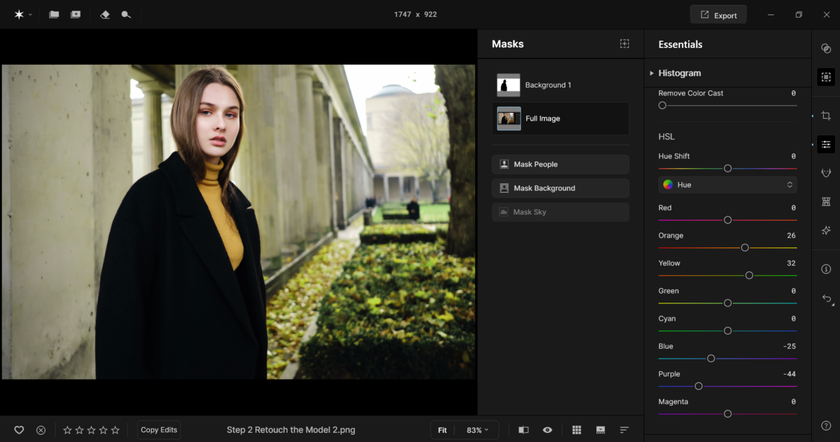 The Bottom Line
The Bottom Line
Even though we may think of autumn photography as the perfect opportunity for cosy shots, it can absolutely be the opposite. Moody shots are very achievable thanks to misty mornings or the sun being lower in the sky, providing longer shadows for cinematic contrast.
Depending on the time of day and the weather conditions, you may end up with a different look, so combine this with your model’s outfit and pose for more dramatic photos. Side and backlighting work best to ensure the photos stay moody rather than too cosy.
I, for one, cannot wait for autumn, and I’m sure you can’t either, so start planning ahead for your moody autumn portrait shoots, and you’ll easily achieve portfolio-worthy shots.


 4. Golden Hour
4. Golden Hour Step 2: Retouch the Model
Step 2: Retouch the Model




 The Bottom Line
The Bottom Line